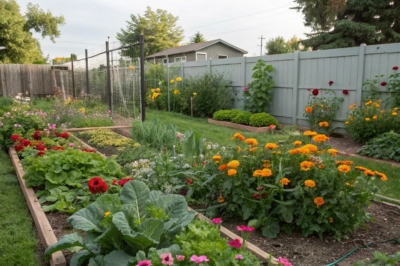1. Use Mulch to Retain Moisture
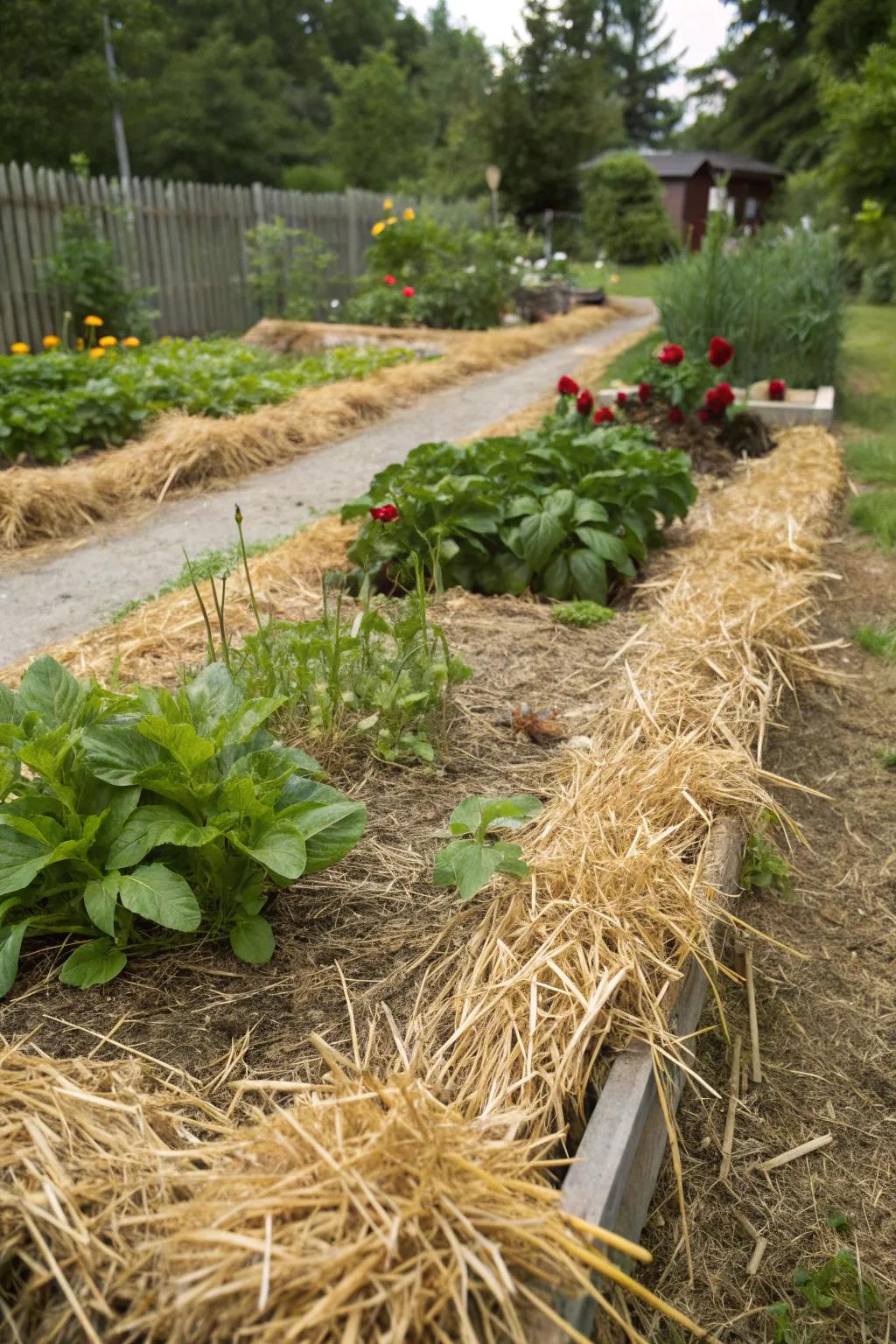
Adding mulch around plants helps retain moisture and suppress weeds. I find that a layer of straw or wood chips works wonders in my garden.
Check if these fit your needs:
- Organic Straw Mulch: Enhance moisture retention and suppress weeds with organic straw mulch in your garden.
- Wood Chips Mulch: Protect your plants from weeds while keeping the soil moist using wood chip mulch.
- Garden Mulch Bark: Add a decorative touch and conserve water with garden mulch bark for healthy plant growth.
2. Plan for Proper Watering
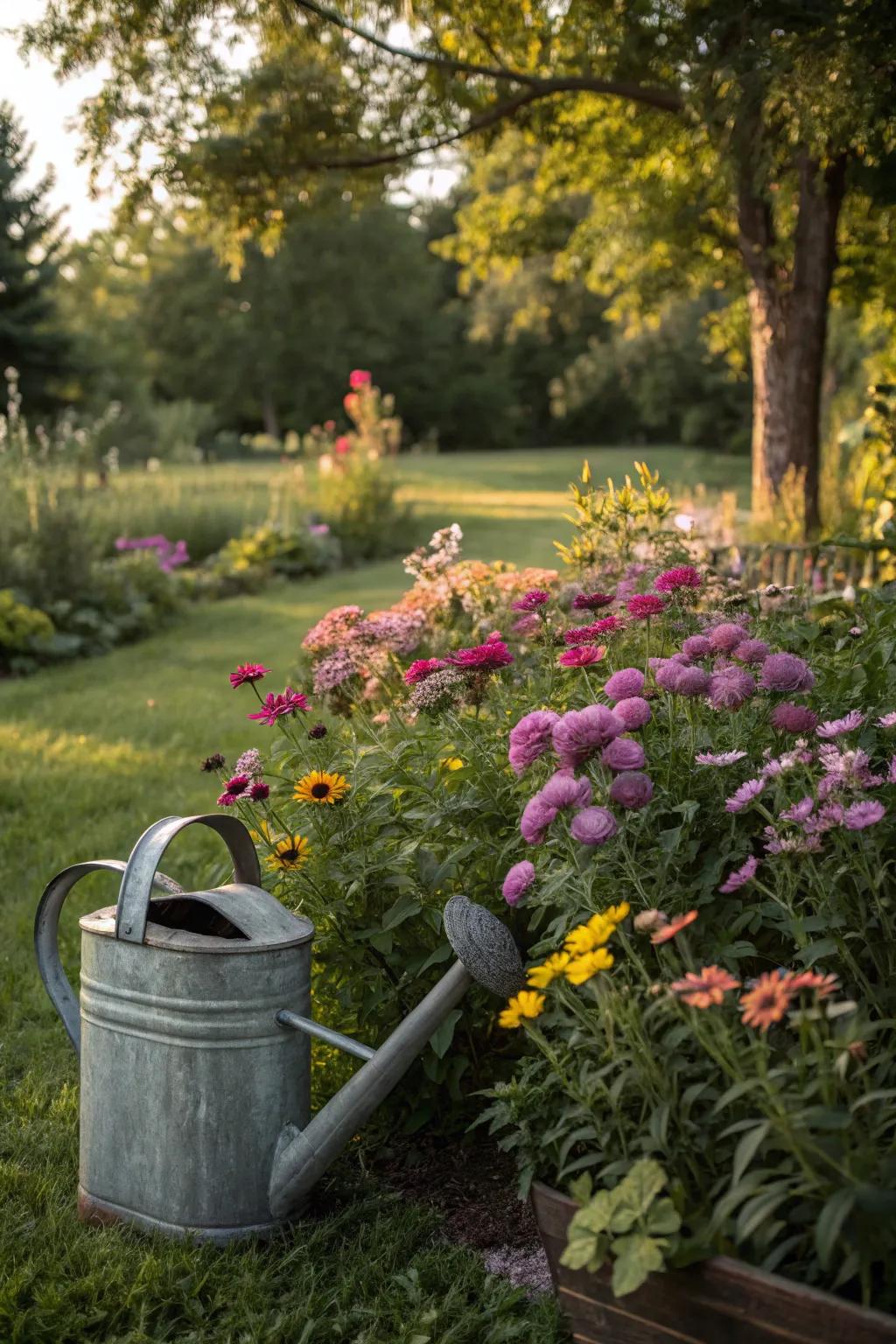
Set up a convenient watering system or place your garden near a water source. I keep a watering can handy, so I never skip a watering session.
Possibly handy products:
- Metal Watering Can: Keep your garden hydrated with a sturdy metal watering can, ideal for easy and precise watering.
- Expandable Garden Hose: Effortlessly reach every corner of your garden with an expandable, kink-free garden hose.
- Automatic Drip Irrigation Kit: Install an automatic drip irrigation kit for worry-free, efficient watering of your plants.
3. Invest in Quality Soil
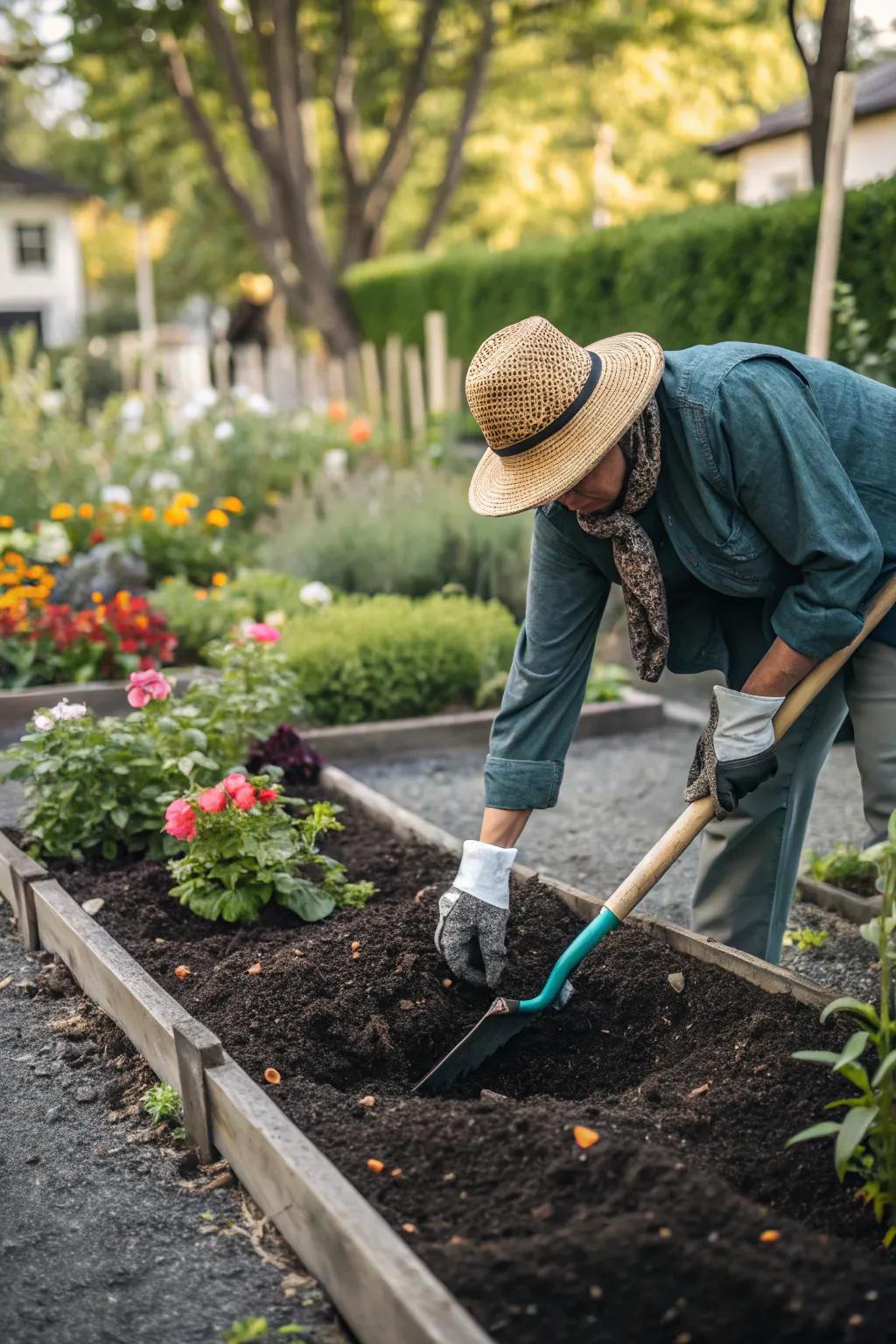
Great plants start with great soil. I always enrich my garden beds with a mix that’s nutrient-rich and well-draining for healthy growth.
Items that may come in handy:
- Organic Garden Soil Mix: Enhance your garden beds with nutrient-rich, organic soil for vigorous plant growth.
- Compost and Soil Blends: Boost soil quality and plant health with a balanced compost and soil blend.
- Perlite for Soil Aeration: Improve drainage and aeration in your garden soil using high-quality perlite.
4. Choose the Right Location
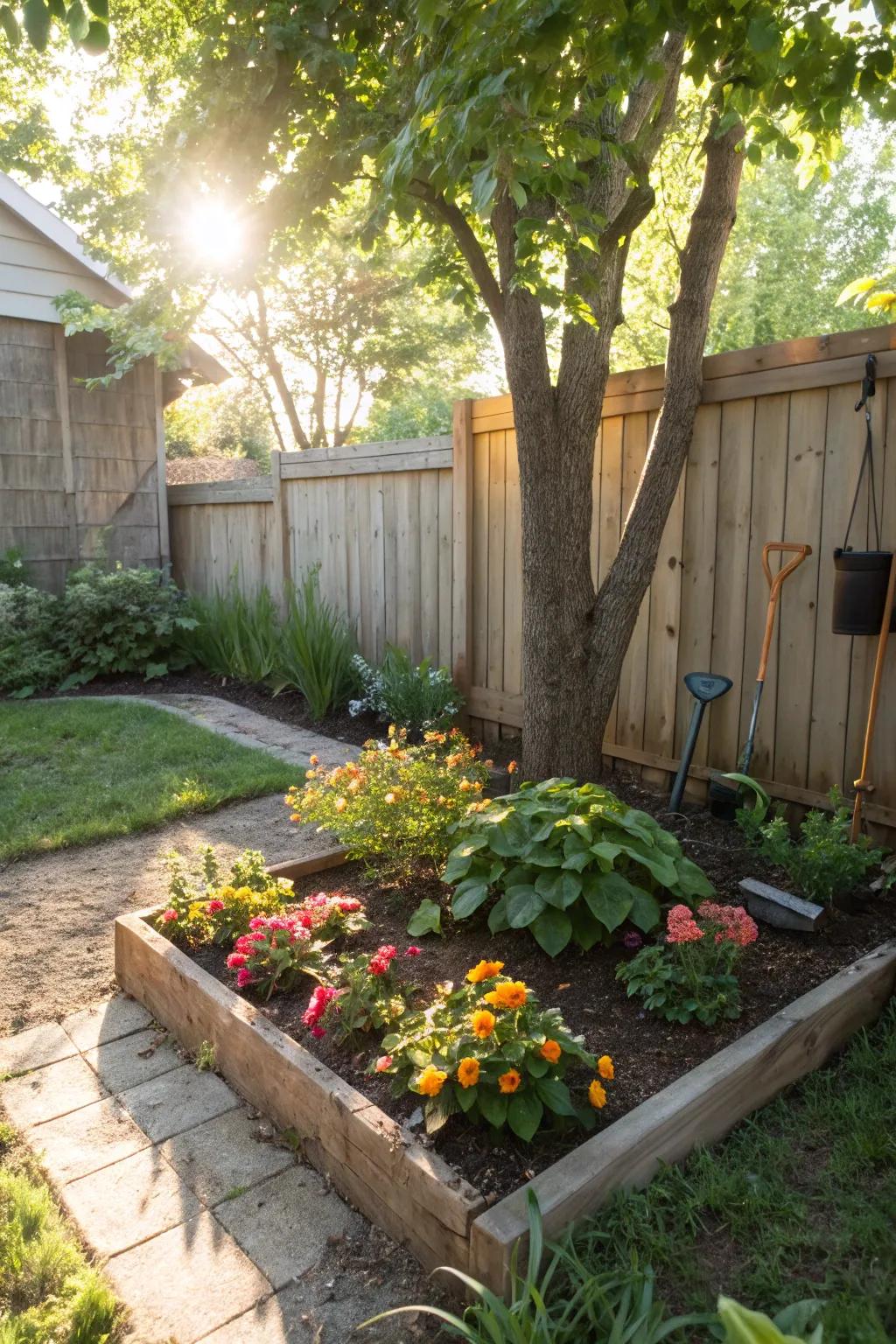
Pick a spot that gets plenty of sunlight and is easily accessible for regular care. My garden thrives because it’s in a location I can check on daily while sipping my morning coffee.
Useful items to consider:
- Outdoor Garden Thermometer: Monitor your garden’s temperature easily to ensure optimal growing conditions for your plants.
- Sunlight Exposure Meter: Check sunlight levels in your garden to optimize plant placement and enhance growth.
- Weatherproof Garden Chair: Enjoy your morning coffee while conveniently overseeing your garden’s daily progress.
5. Join a Gardening Community
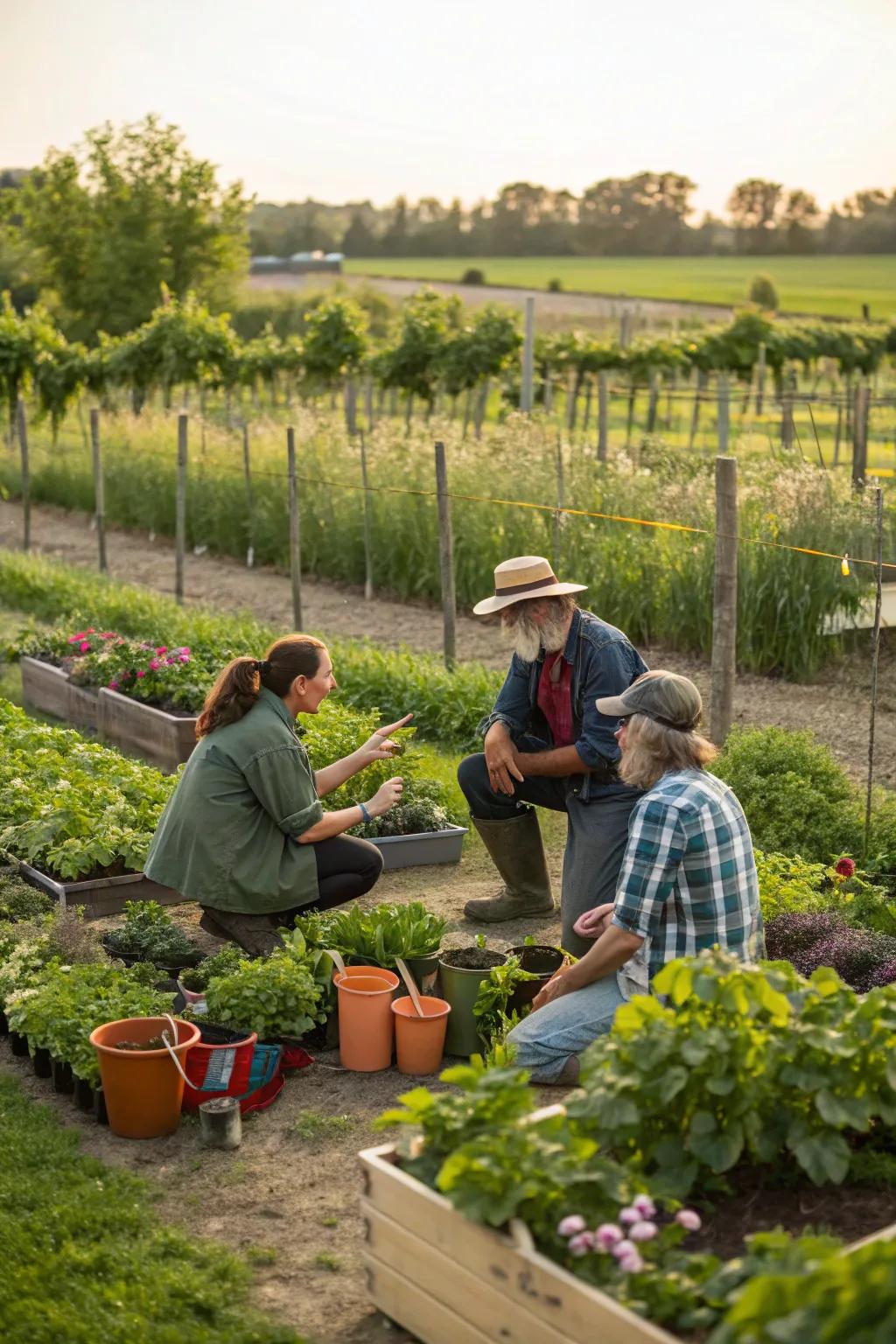
Connect with local gardeners for advice and support. Sharing experiences with others has enriched my gardening journey tremendously.
A few relevant products:
- Gardening Tool Set: Equip yourself with essential tools to easily manage your gardening projects. Start digging today!
- Organic Fertilizer: Boost your plants’ growth with organic fertilizers. Cultivate healthier, lush gardens now!
- Raised Garden Bed Kit: Enhance your garden setup with a raised bed. Access gardening with ease and convenience!
6. Rotate Your Crops
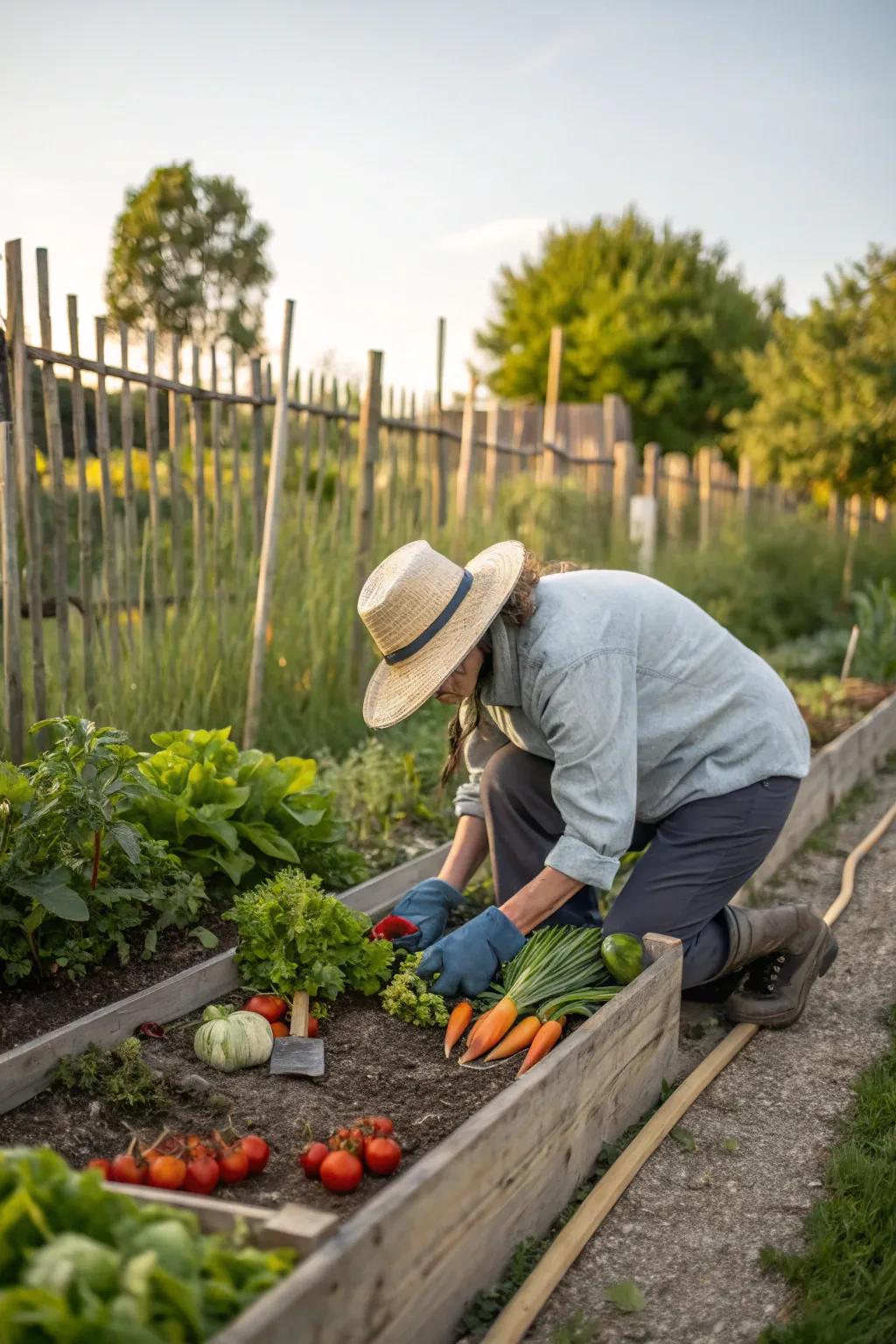
Avoid planting the same crops in the same spot each year to reduce pests. Crop rotation has kept my garden healthy and bountiful.
Might be a good match:
- Raised Garden Bed Kit: Enhance crop rotation with versatile raised beds. Easily manage your planting space efficiently.
- Garden Planning Journal: Keep track of crop rotations and garden layouts with this essential planning journal.
- Organic Vegetable Seeds Variety Pack: Explore diverse crop options for effective rotation with this organic seeds variety pack.
7. Start with Easy Vegetables
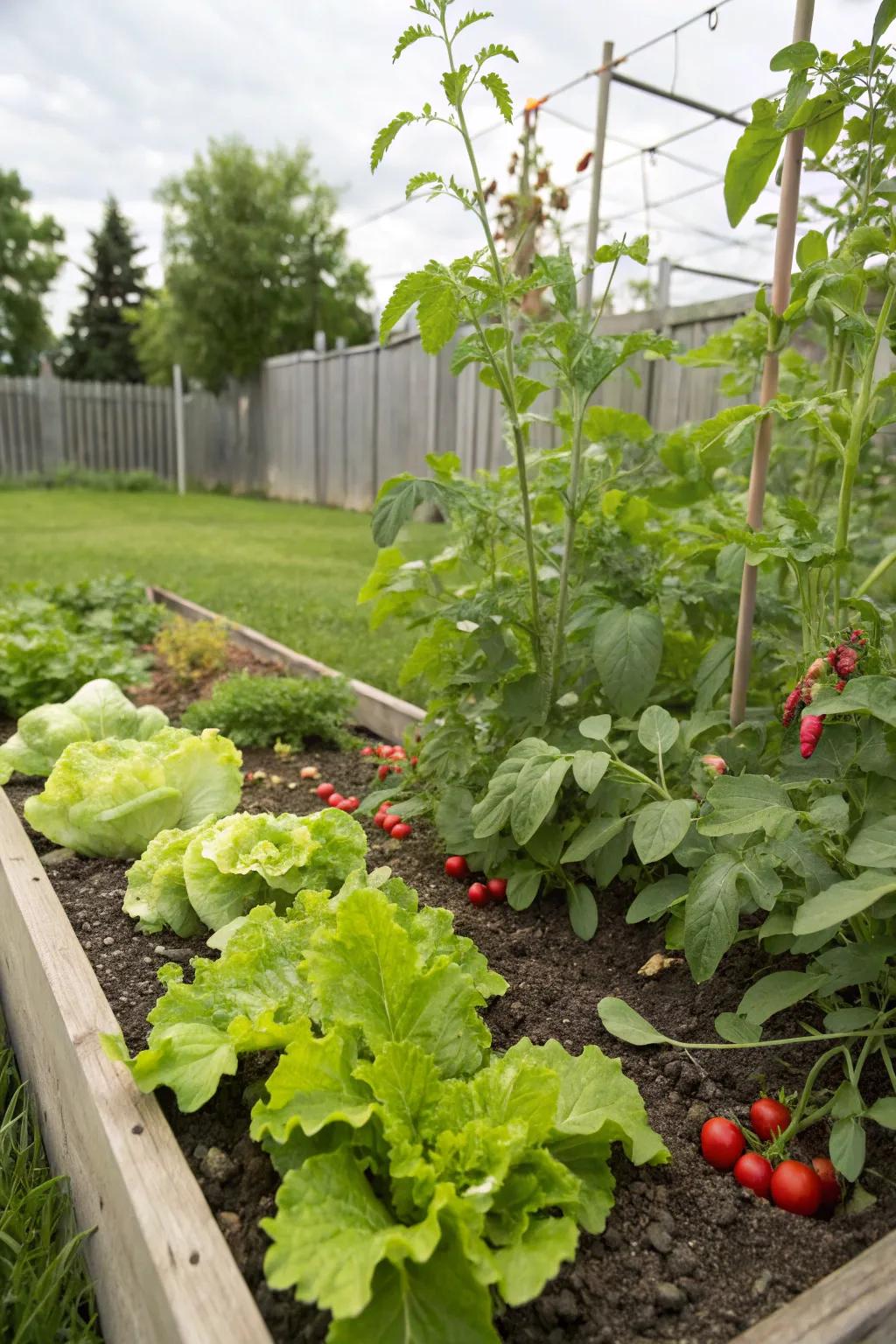
For beginners, vegetables like lettuce, radishes, and tomatoes are forgiving and rewarding. They were my first success stories and boosted my confidence early on.
Some ideas to consider:
- Vegetable Seed Starter Kit: Kickstart your garden with an easy-to-use seed starter kit for effortless planting success.
- Raised Garden Bed: Optimize your garden space with a durable raised bed, perfect for beginner-friendly vegetables.
- Organic Vegetable Fertilizer: Enhance your vegetable growth with organic fertilizer, ensuring healthy and vibrant plants.
8. Start Small and Manageable
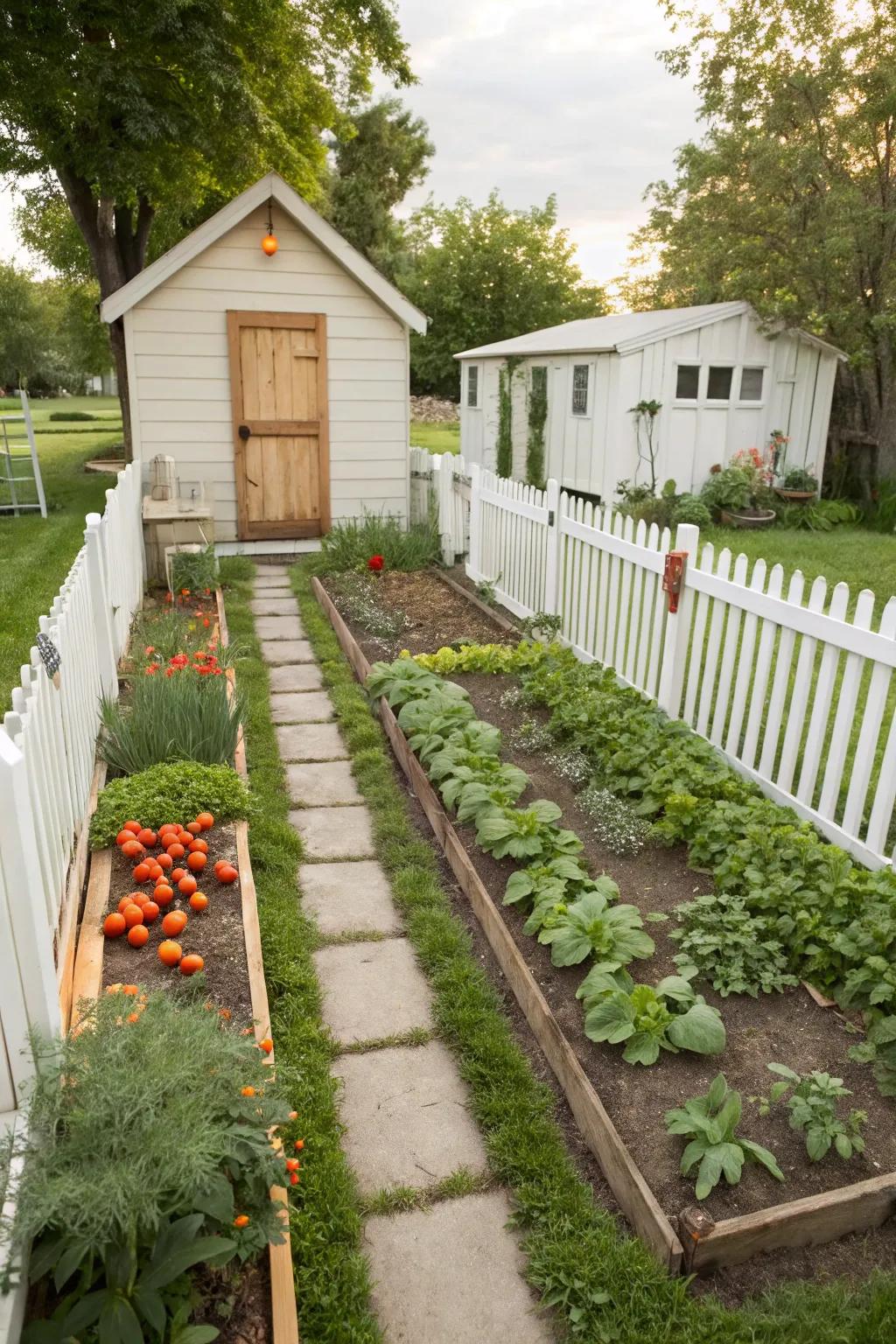
Begin with a small garden space to avoid feeling overwhelmed. Trust me, it’s better to be proud of a flourishing small patch than struggle with a large, unmanageable plot.
Check these products out:
- Raised Garden Bed Kit: Easily start your small garden with this raised bed kit, perfect for beginners.
- Garden Hand Tool Set: Equip yourself with a compact tool set for efficient and enjoyable small-space gardening.
- Vegetable Seed Variety Pack: Jumpstart your garden with this diverse seed pack, ideal for small beginner gardens.
9. Try DIY Garden Projects
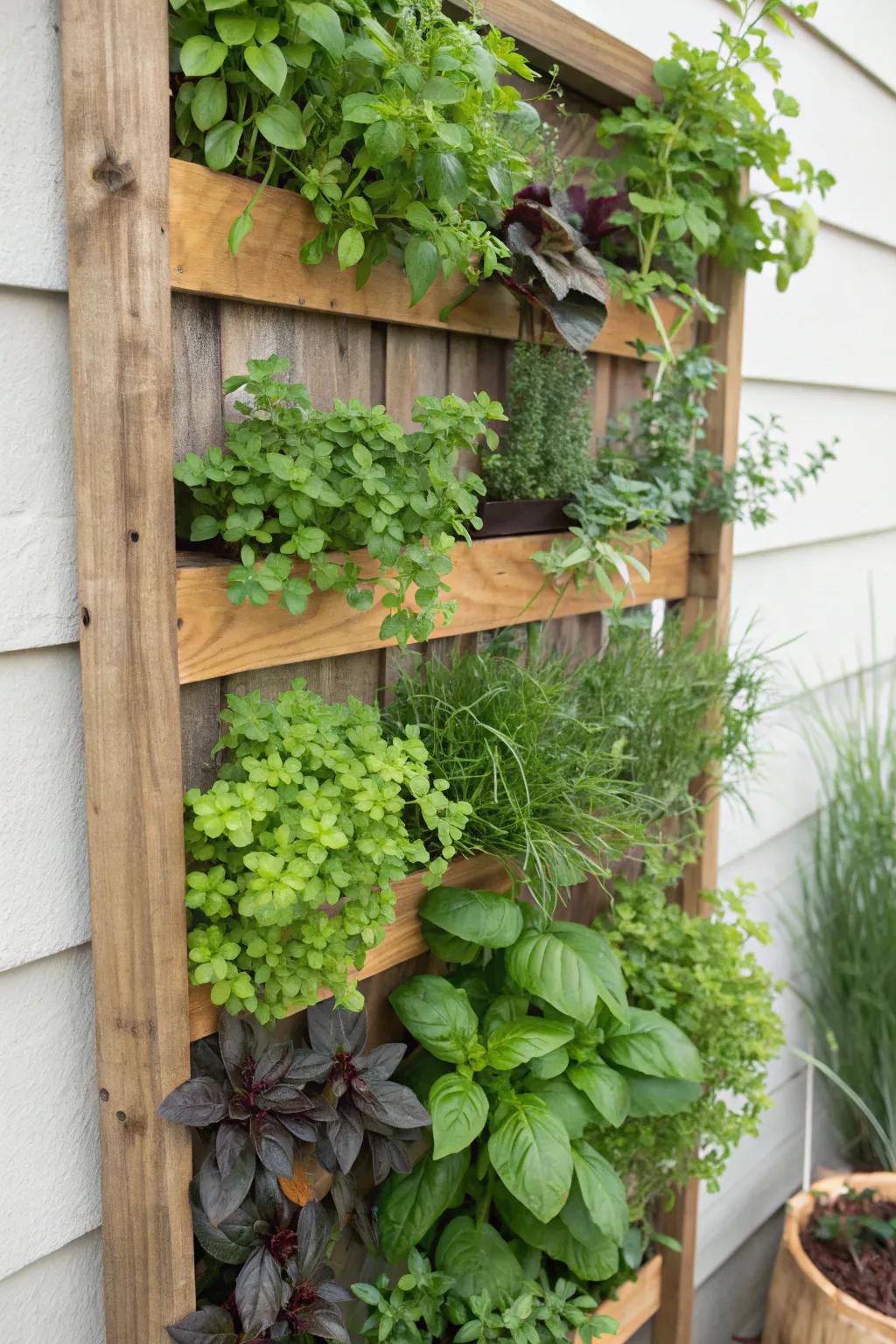
Create DIY garden features like a vertical garden for herbs. It’s a fun project that saves space and adds beauty to any area.
Consider these options:
- Vertical Garden Planter: Transform your space with a vertical garden planter, perfect for herbs and small plants.
- Wall Mounting Brackets: Secure your vertical garden with reliable wall mounting brackets for enhanced stability and safety.
- Herb Seed Kit: Start your herb garden effortlessly with an easy-to-use herb seed kit for beginners.
10. Embrace Companion Planting
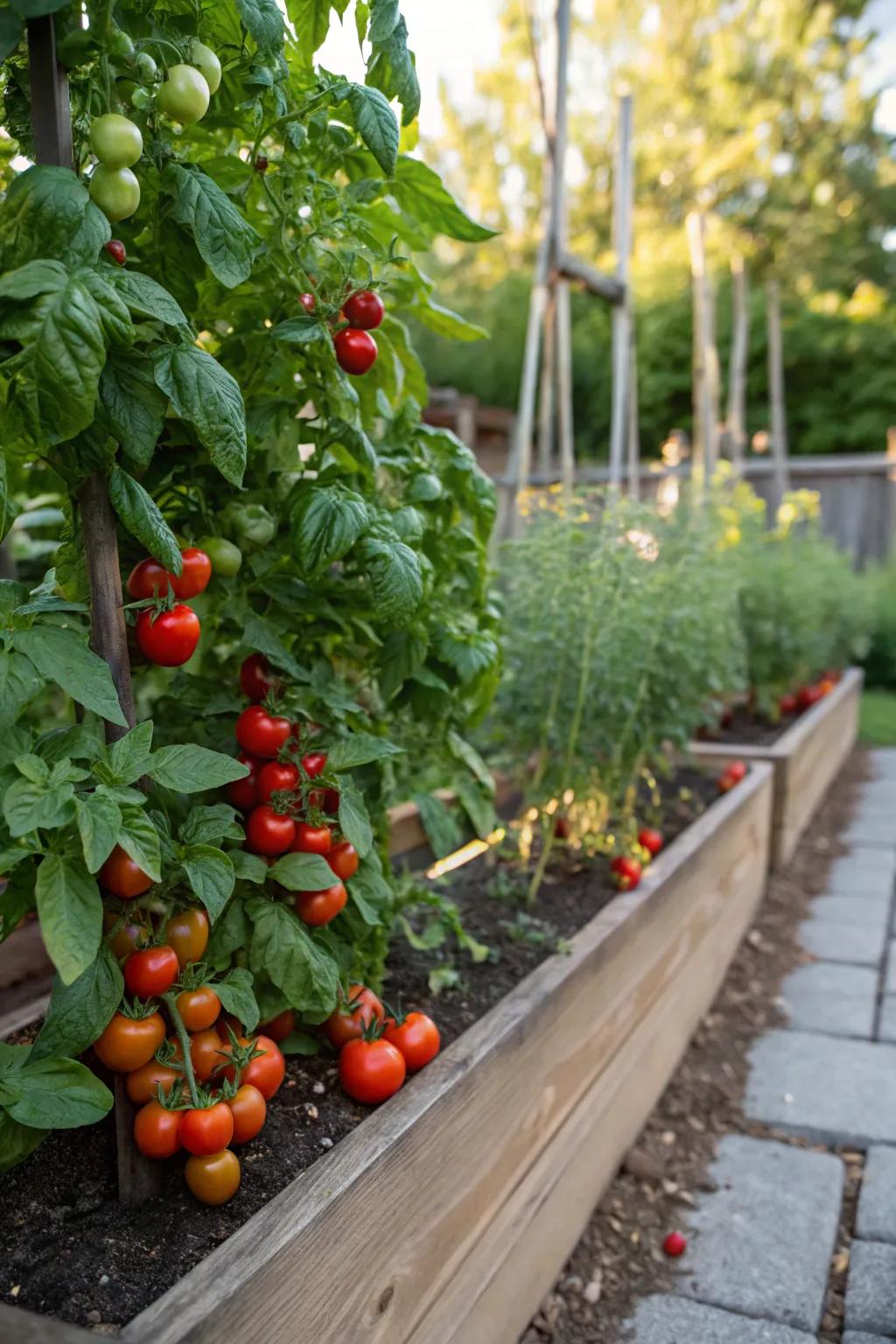
Pairing plants like tomatoes with basil can enhance growth and deter pests. This technique has made a noticeable difference in my garden’s productivity.
You might like:
- Raised Garden Bed Planters: Elevate your garden for optimal growth and accessibility. Perfect for companion planting practices.
- Organic Heirloom Tomato Seeds: Grow delicious tomatoes with ease and enhance your garden’s biodiversity with these quality seeds.
- Basil Plant Starter Kit: Start your basil companion planting journey with this easy-to-use starter kit for fresh harvests.
11. Create a Gardening Schedule
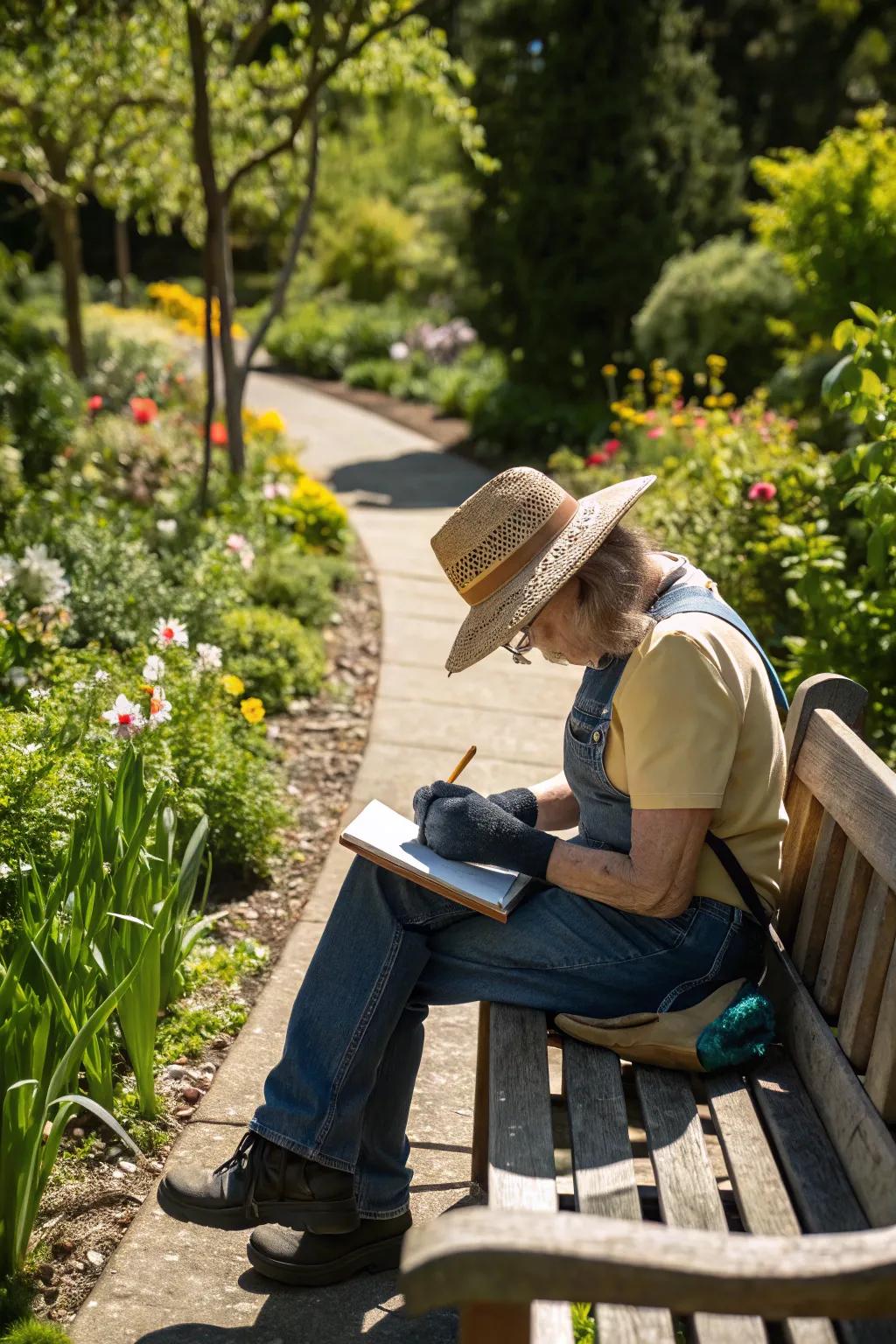
Keep a gardening journal to track planting dates and care routines. This practice has kept me organized and improved my garden’s yield.
Maybe worth checking out:
- Gardening Journal: Track your plant care routines effortlessly with a dedicated gardening journal. Stay organized today!
- Weatherproof Notebook: Ensure your notes withstand outdoor conditions with a durable weatherproof notebook. Start gardening smoothly!
- Garden Tools Set: Equip yourself with essential garden tools to enhance your planting efficiency. Get started now!
12. Experiment with Companion Flowers
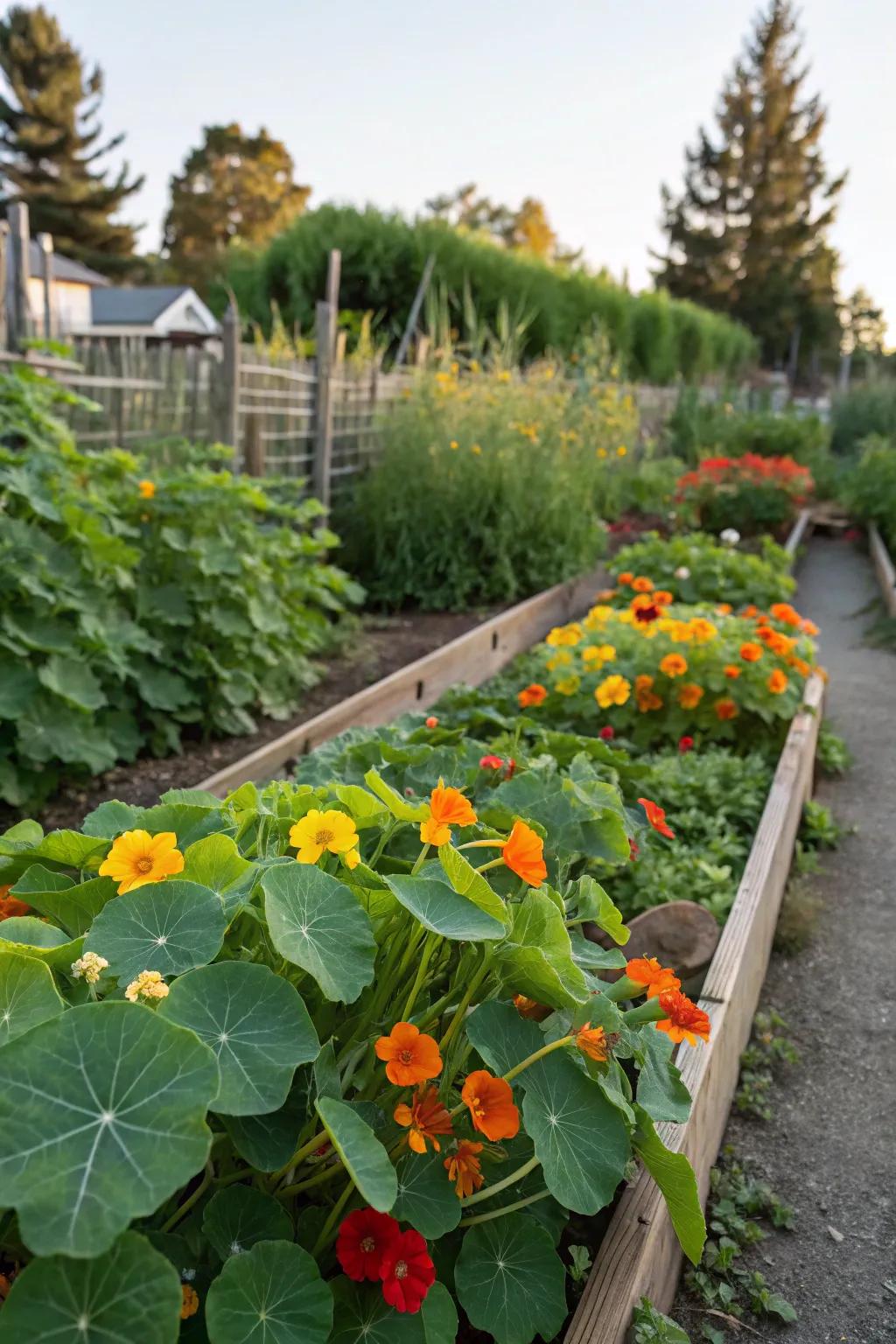
Incorporating flowers like nasturtiums can deter pests naturally. Plus, they add a splash of color to my vegetable patches.
These products might help:
- Nasturtium Flower Seeds: Plant vibrant nasturtium seeds to naturally deter pests and enhance your garden’s visual appeal.
- Organic Fertilizer for Flowering Plants: Use organic fertilizer to promote lush growth and vibrant blooms in your nasturtium flowers.
- Raised Garden Bed Kit: Build your ideal flower garden with an easy-to-assemble raised bed kit designed for quality growth.
13. Celebrate Your Successes
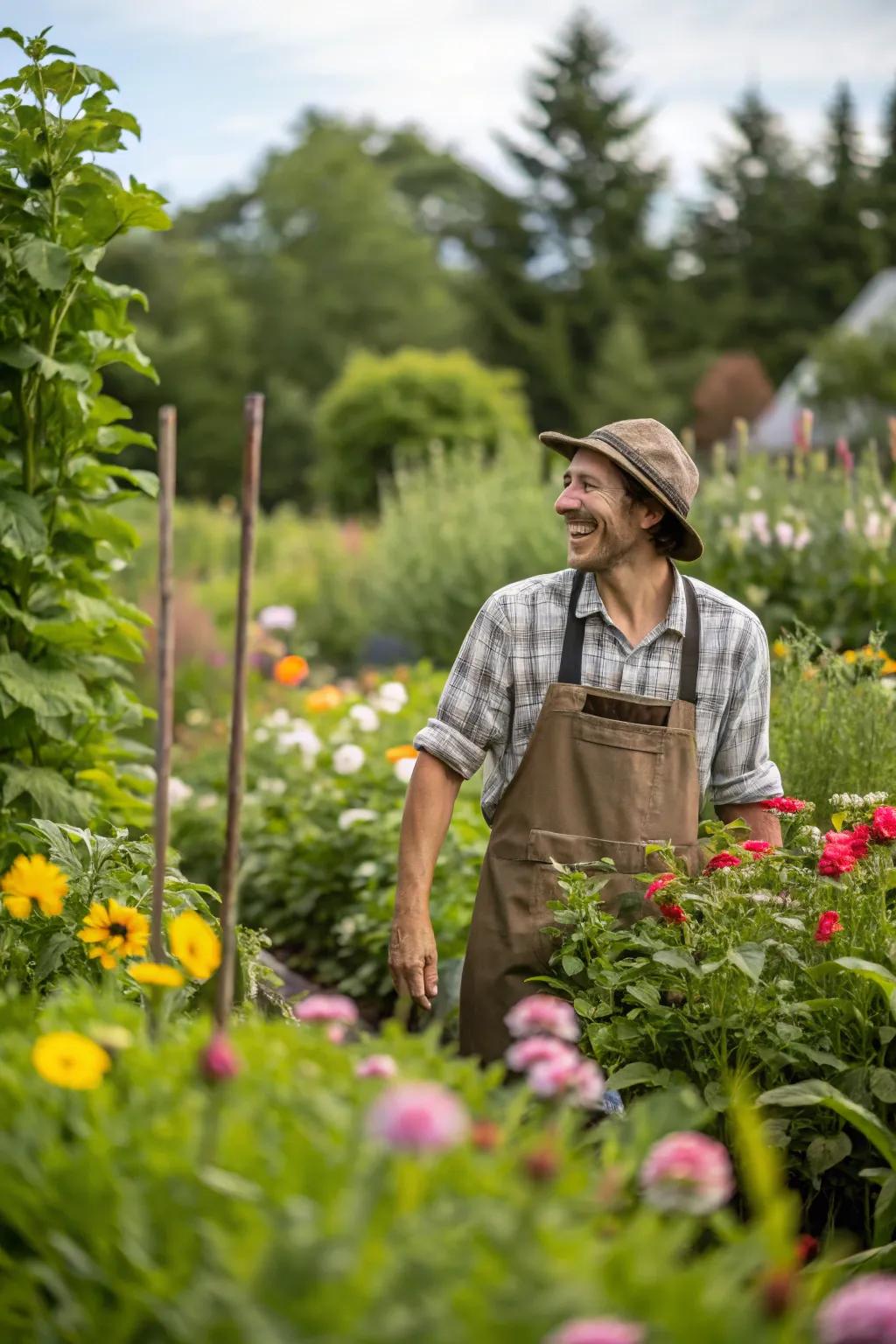
Take time to enjoy and celebrate your garden’s progress. Seeing my garden grow is one of the most rewarding experiences I’ve had.
These products might be useful:
- Garden Journal: Document your garden’s progress and celebrate each milestone with this handy garden journal.
- Outdoor String Lights: Enhance your garden’s ambiance with elegant outdoor string lights for a celebratory feel.
- Garden Statue: Add a touch of personality and celebrate your achievements with a charming garden statue.
14. Monitor for Pests

Keep an eye out for pests and use gentle methods like neem oil. It’s a constant battle, but vigilance keeps my garden pest-free.
Give these a look:
- Neem Oil Spray: Control garden pests naturally with neem oil—apply regularly for a healthier garden.
- Garden Insect Traps: Place insect traps around your garden to monitor and reduce pest populations effortlessly.
- Organic Pest Control Soap: Use this soap to gently manage pests, ensuring your plants thrive without harm.
15. Use Natural Fertilizers
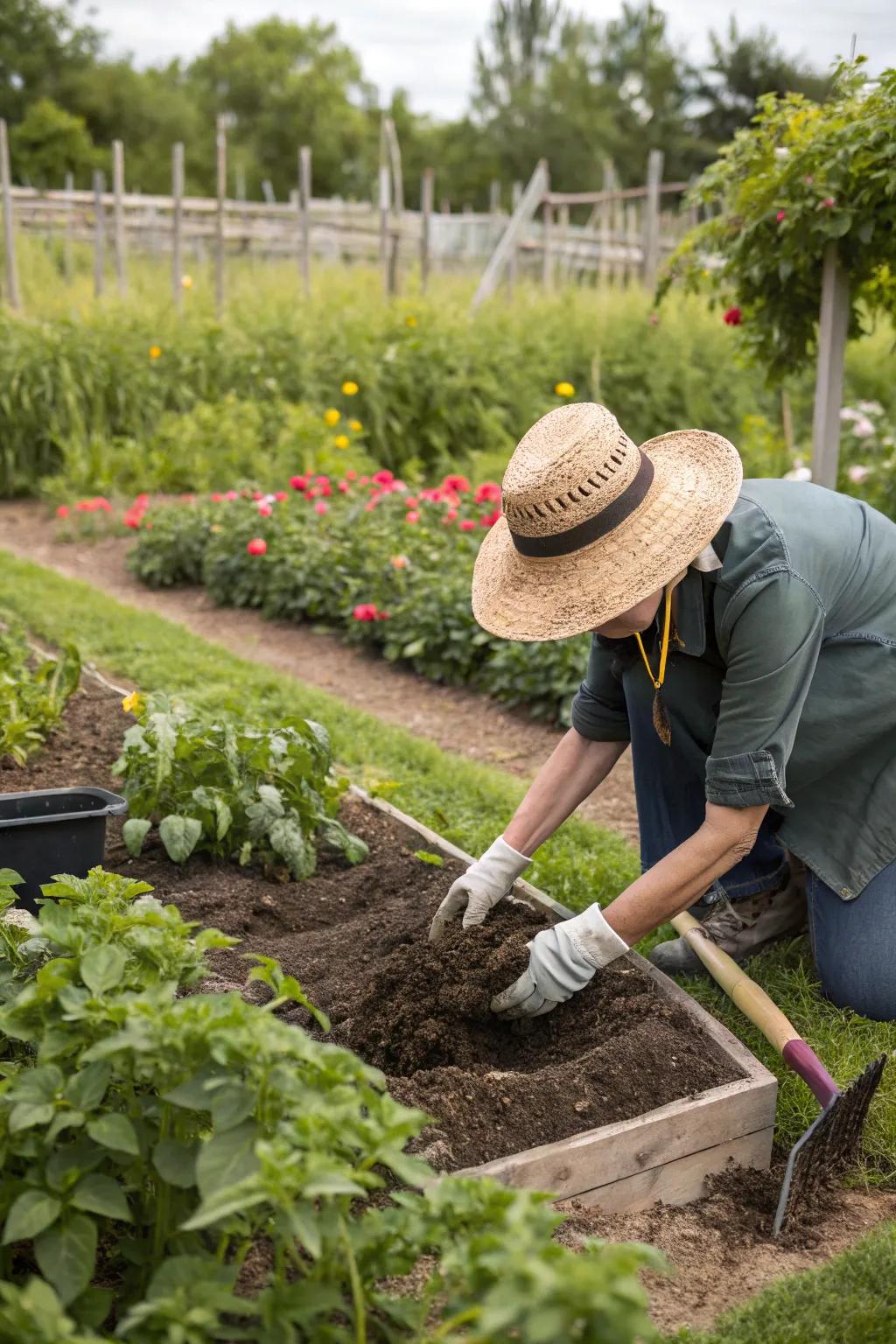
Try natural fertilizers like compost or coffee grounds to enrich your soil. I love seeing my plants perk up after a good feed of homemade compost.
Explore these options:
- Compost Bin: Start composting at home easily. Boost soil nutrients with your own organic waste.
- Coffee Grounds Fertilizer: Enrich your garden with coffee grounds. Improve soil structure and boost plant growth.
- Organic Plant Fertilizer: Feed your plants naturally. Enhance soil health with effective organic nutrients.
16. Practice Pruning
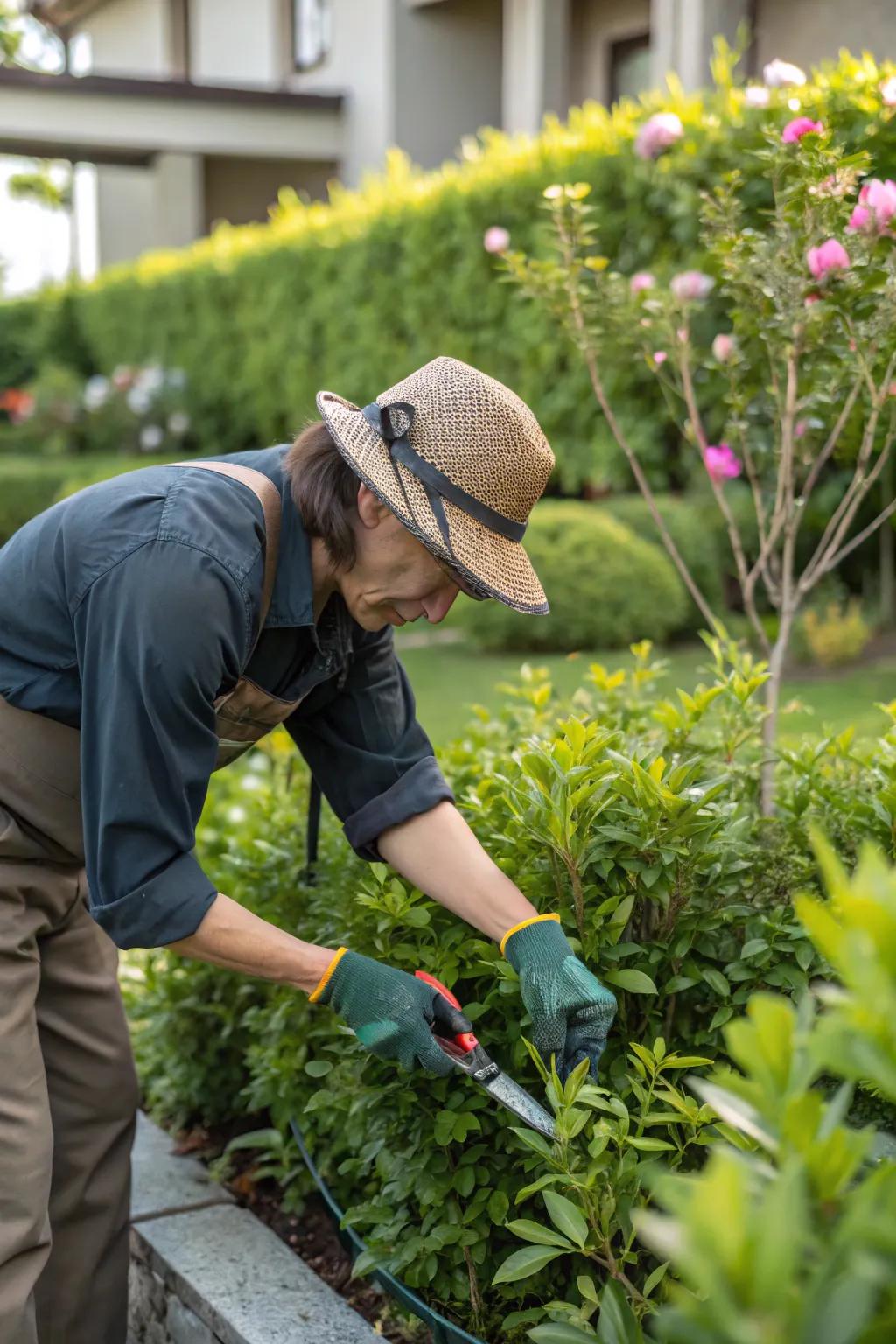
Regular pruning encourages strong and healthy growth. Just like a good haircut, it keeps my plants looking fresh and flourishing.
A few things you might like:
- Garden Pruning Shears: Keep your plants healthy and neat with these sharp, precise pruning shears. Ideal for beginners.
- Adjustable Garden Gloves: Protect your hands with durable gloves designed for flexibility while pruning. Perfect for any gardener.
- Wide-Brimmed Gardening Hat: Stay comfortable and shaded while working in your garden with this stylish, protective hat.
17. Experiment with Different Plant Varieties
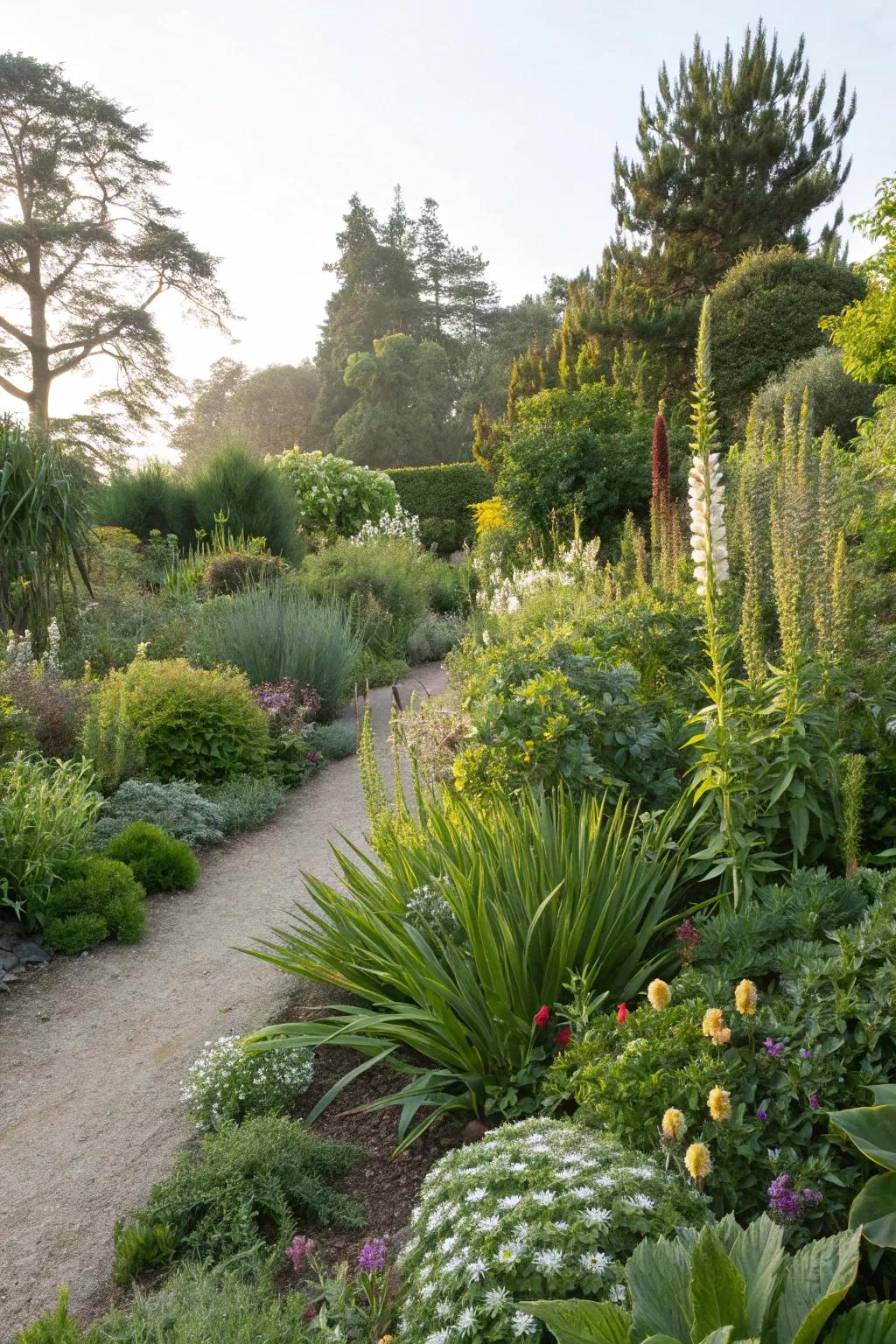
Don’t be afraid to try new plant varieties each season. It’s exciting and has led me to discover some of my favorite plants.
May just do the trick:
- Assorted Flower Seed Pack: Discover your favorite blooms by planting this diverse assortment of flower seeds in your garden.
- Organic Vegetable Seed Kit: Enhance your garden with fresh flavors by growing new organic vegetables each season.
- Herb Garden Starter Set: Start your own herb garden and enjoy a variety of flavors throughout the year.
